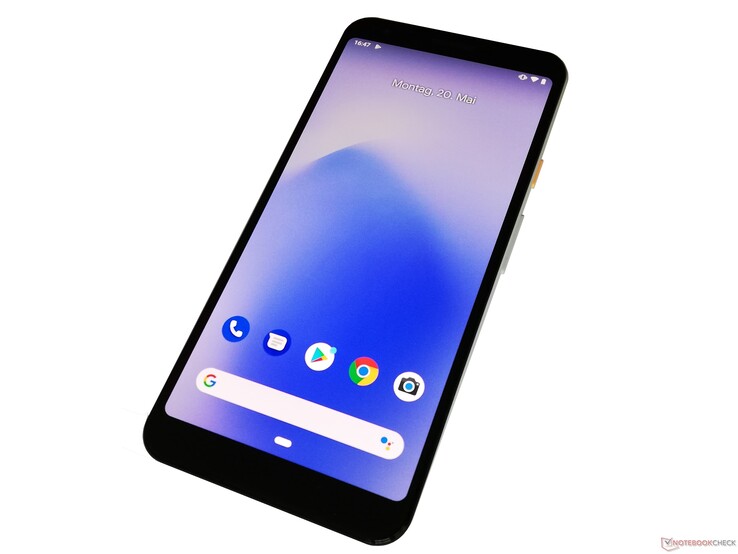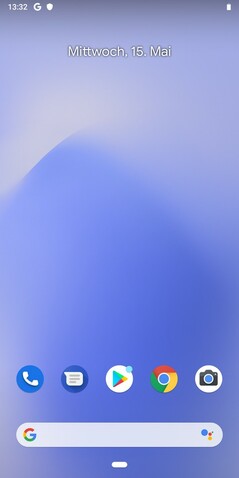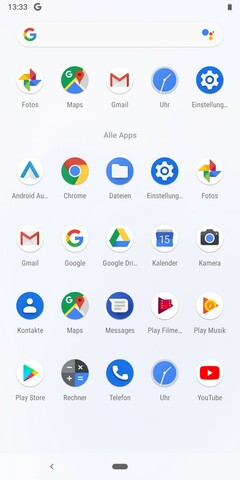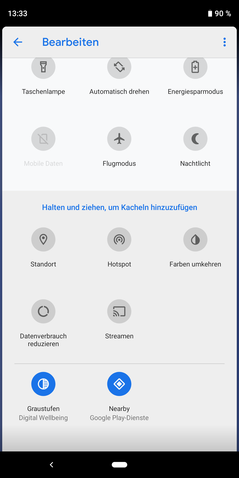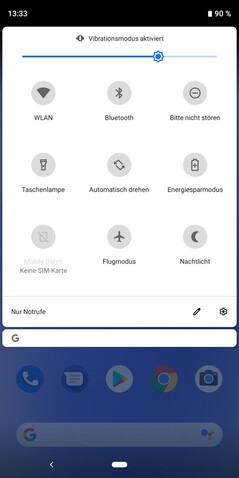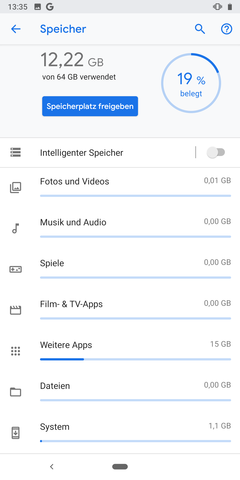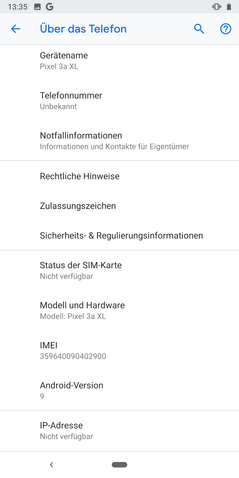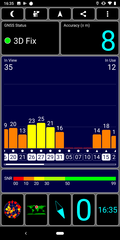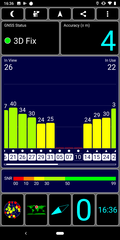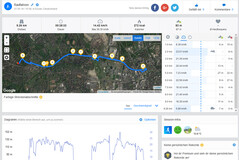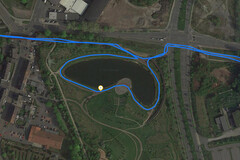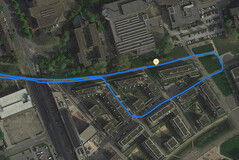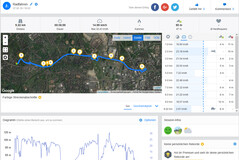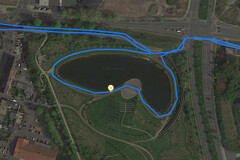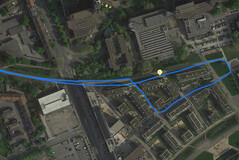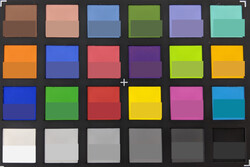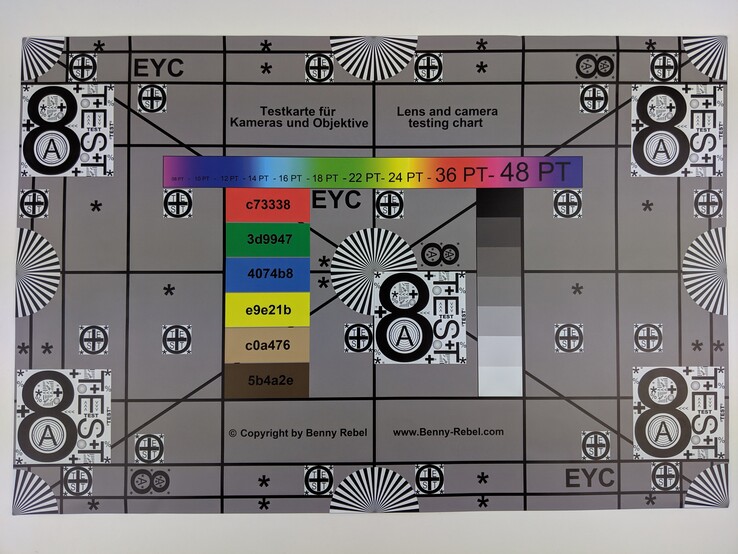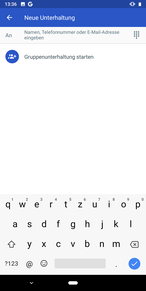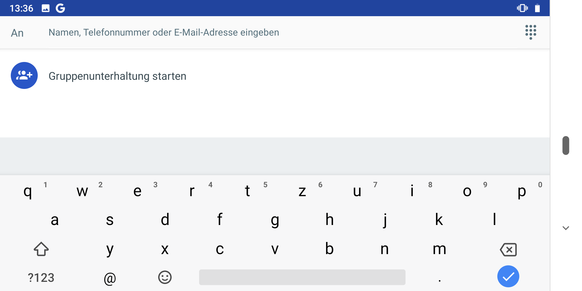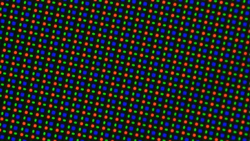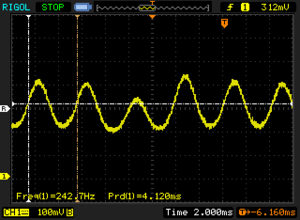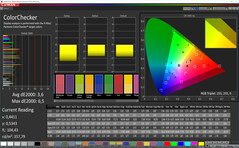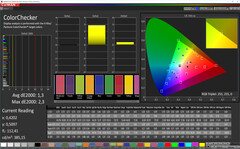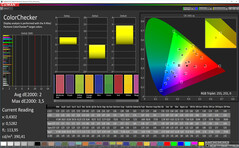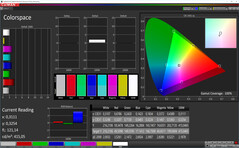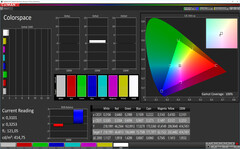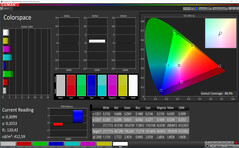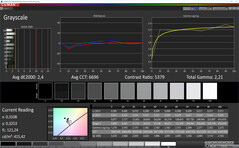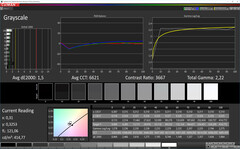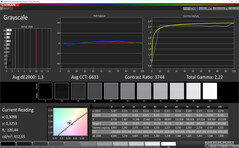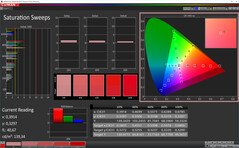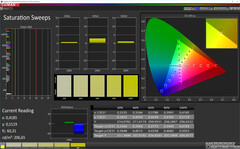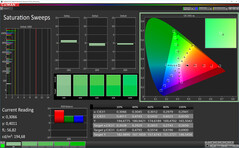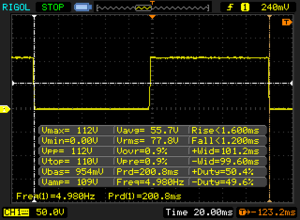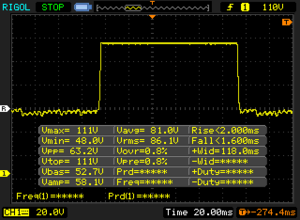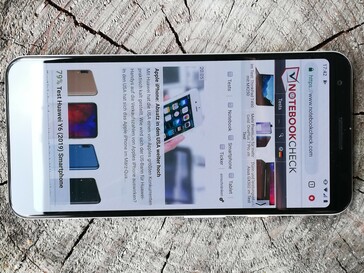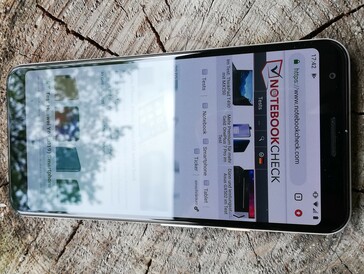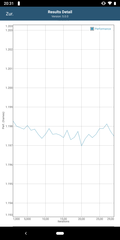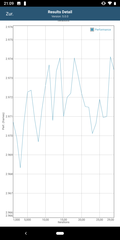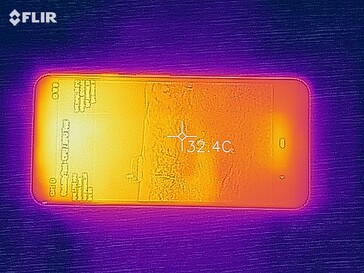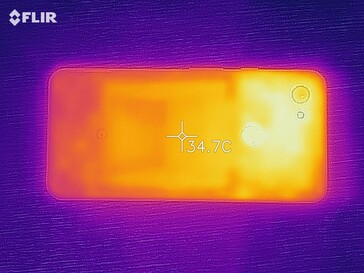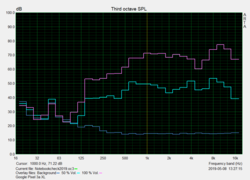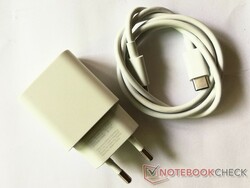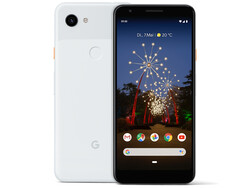Google Pixel 3a XL Smartphone Review
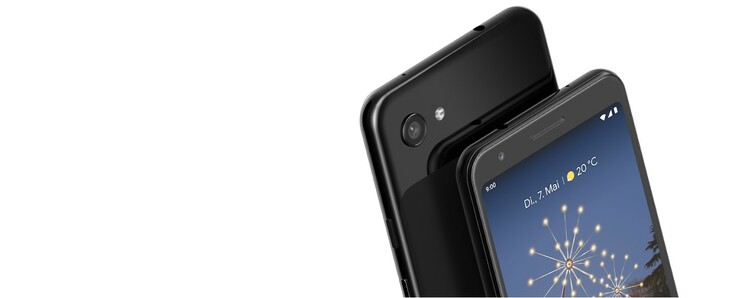
Until now, Pixel smartphones have been synonymous with high prices. According to our database, Google launched the Pixel XL, Pixel 2, Pixel 2 XL, Pixel 3 and Pixel 3 XL all for at least €800 (~$894), with prices creeping up with every new generation. The Pixel 3a and 3a XL buck this trend though and are a return for Google to the more affordable pricing of its Nexus smartphone series.
The Pixel 3a and 3a XL have a different focus to their Nexus predecessors. While the latter came with Qualcomm Snapdragon 800 series SoCs, Google has opted for the Qualcomm Snapdragon 670 with the Pixel 3a and 3a XL. The chip integrates an Adreno 616 GPU, which is complemented with 4 GB of RAM and 64 GB of eMMC flash storage. By contrast, Google equips the Pixel 3 XL with faster UFS 2.1 storage, so you may notice apps loading slightly quicker on the more expensive Pixel, for example. Unfortunately, there is microSD card expansion, so you are stuck with just 64 GB of physical storage minus that which is occupied by the OS and any pre-installed apps.
The Pixel 3a XL is considerably cheaper than the 3 XL, so we shall not be comparing the two in this review. Instead, we shall assess the 3a XL against the Motorola Moto Z3 Play, Nokia 8.1, Sony Xperia 10 Plus and the Xiaomi Mi 9. You can add other smartphones that we have tested into our comparison tables too, for reference.
Case
The 3a XL retains the styling of its more expensive siblings. The device has a two-tone back, a colour contrasting power button and a single rear-facing camera flanked by an LED flash. The 3a XL has thick display bezels too like the Pixel 3 and Pixel 2 XL. Our review unit also feels like the 3 XL in our hands, but Google has opted for a plastic case rather than the glass and metal one that it used in the Pixel 3 and 3 XL. You would be forgiven for failing to tell the 3a XL and 3 XL apart from the back though, as Google has engineered the plastic back of the former to have to the same two-tone matte and glossy finish that the latter has. The fingerprint sensor on the 3a XL is slightly more recessed than it is on the 3 XL, but the rear-facing camera, LED flash, power button and volume rocker are all in the same place. The physical buttons sit firmly in their housings too, and there are no uneven gaps between materials. Overall, the 3a XL is an impressively well-built device considering that is made from plastic.
The plastic design allows the 3a XL to be lighter than most of our comparison devices though. It is thicker and longer than all but the Xperia 10 Plus too. However, our review unit is roughly as wide as the Mi 9, Moto Z3 Play, and Nokia 8.1 despite its comparatively thick bezels.
Connectivity
As mentioned at the start of this review, Google has equipped the 3a XL with a Snapdragon 670 SoC, which integrates an Adreno 616 GPU among other components. There is also 4 GB of RAM and 64 GB of eMMC flash storage, but no microSD card expansion. Additionally, the device has one single nano-SIM card slot, but there is an eSIM, so it is effectively a dual-SIM device. Your carrier must support eSIMs though, so you cannot use an eSIM with any network.
Google has included an NFC chip too for use with services such as Google Pay. iFixit has confirmed that the 3a and 3a XL retain the Titan M security chip that the company used in the Pixel 3 and 3 XL. This chip integrates with Verified Boot to protect the device from having its bootloader, payment functions, passwords and more compromised by attackers. Titan M is a dedicated chip that sits separately from the SoC, which theoretically makes it harder to crack than those that are integrated within the processor, such as Apple’s Secure Enclave or ARM’s TrustZone.
The headphone jack makes a surprise return, with Google having omitted it from previous Pixel smartphones. The company has explained its reasoning for this, which we have covered here. There is also a USB 2.0 Type-C port for charging and data transfer, along with Widevine DRM L1 certification for streaming DRM protected content from the likes of Amazon Prime Video and Netflix in HD. The device only supports Level 3 Camera2 API, for some reason.
Software
The 3a XL currently ships with Android 9.0 Pie, while our review unit had 5 March 2019 security patches installed at the time of testing. The device runs stock Android as previous Pixel devices have, which is free of any third-party bloatware.
Google guarantees that it will release security patch updates to the 3a XL for the next three years. Likewise, it will roll-out system updates for the next two years.
Some people online have reported experiencing sporadic shutdowns with the 3a and 3a XL. We experienced no such issues with our review sample during our tests.
Communication & GPS
As expected, the 3a XL supports GSM, 3G and LTE networks. The device utilises LTE Cat 11 for up to 600 MBit/s download speeds and LTE Cat.5 for 75 MBit/s upload speeds.
The 3a XL also supports Bluetooth 5.0 along with all modern Wi-Fi standards up to IEEE 802.11 ac, which allows it to connect to 2.4 GHz or 5 GHz Wi-Fi networks. Our review unit achieved excellent results in our iperf3 Client Wi-Fi tests, with it trading blows with the Mi 9 at the top of our comparison tables. The 3a XL leaves our other comparison devices in its wake here and is around 3 times faster than the class average.
| Networking | |
| iperf3 transmit AX12 | |
| Google Pixel 3a XL | |
| Xiaomi Mi 9 | |
| Nokia 8.1 | |
| Motorola Moto Z3 Play | |
| Sony Xperia 10 Plus | |
| iperf3 receive AX12 | |
| Xiaomi Mi 9 | |
| Google Pixel 3a XL | |
| Sony Xperia 10 Plus | |
| Nokia 8.1 | |
| Motorola Moto Z3 Play | |
The 3a XL uses GALILEO, GLONASS and GPS, including A-GPS, for location services. Our test device found a satellite fix with up to 8 metres (~26 ft) accuracy when we tested it indoors and 4 metres (~13 ft) when we moved outside. These are both decent values for a midrange smartphone.
We also took our review unit on a bike ride to test its location accuracy against a bike computer, the Garmin Edge 500. Surprisingly, the 3a XL plotted a more accurate route than the Garmin, examples of which you can see below. Generally, the Pixel could keep up with us better in corners than the Garmin. In short, the 3a XL is accurate enough even for demanding navigation tasks.
Telephone Functions & Call Quality
The 3a XL comes with the standard suite of Google telephony apps. These apps function just as well on our review unit as they did on other devices that we have tested.
Our review unit has decent call quality too. Our call partner remained easy to understand throughout our test calls, while the microphones reliably filtered out any background noise that would have otherwise overpowered our voice. The earpiece also gets loud enough to comfortably make calls from noisy environments.
The 3a XL supports voice over LTE (VoLTE) Wi-Fi calls (VoWiFi). However, your carrier must provision the device on its network before either of these technologies will work. Hence, VoLTE and VoWiFi will not work on every network.
Cameras
Google equips the 3a XL with a 12.2 MP rear-facing camera, the same one that it uses in the Pixel 3 and 3 XL. The sensor has a pixel size of 1.4 μm, an ƒ/1.8 aperture and a 76 ° field of view. The camera also supports autofocus along with electronic and optical image stabilisation.
By contrast, the front-facing camera is an 8 MP sensor with a narrower ƒ/ 2.0 aperture, a smaller pixel size of 1.12 μm and an 84 ° field of view. The sensor also only supports fixed focus and is not optically stabilised. Overall, the selfies look detailed, while the sensor preserves fine details and structures. Likewise, colours look vivid, and objects are clearly demarcated.
The default camera app has several modes including portrait, panorama and night sight among others. Moreover, there is an option to retouch selfies, which Google sets to “Natural” by default. You can further soften selfies with the “Soft” mode or turn it off altogether. The default camera app has a timer, an HDR mode, white balance options and can take a “motion photo”, which captures a short video and allows you to choose between shots. There is no manual or professional mode though.
The rear-facing camera is one of the main talking points of the 3a and 3a XL. It creates impressively detailed photos for a sensor in a midrange smartphone, and we can only notice image blur when we zoom in closely. Macro photos are detailed, and colours stand out well. Likewise, the sensor clearly delineates objects and fine structures even at high levels of zoom.
The 3a XL also does a great job in low-light, as demonstrated below by scene 3. Our review unit captures more details than the Galaxy S10+ and Mi 9 do, which is unsurprising considering that it is the same sensor as the one in the 3 XL. Colours are slightly off though, and there is noticeable image noise. Please keep in mind that we photographed scene 3 using the automatic camera mode and not Night Sight. The latter would have probably taken a more detailed and better-exposed photo, for reference. The default camera app also integrates features such as Google Lens, which can bring up contextual information about your surroundings, for example.
The cameras do a decent job at recording videos too. Our review unit has no problems with tracking fast moving objects or adjusting focus levels. The electronic and optical image stabilisation also compensate well for any camera shaking while recording with the rear-facing sensor.
The default camera app can shoot video at up to 4K at 30 FPS. You can use 60 FPS and 120 FPS at lower resolutions though.
We also subjected the rear-facing camera to further tests under controlled lighting conditions. Our review unit generally reproduces colours more brightly than ColorChecker reference colours, although one grey tone looks perfect.
The 3a XL does a great job at reproducing our test chart. Details and fine structures are easily recognisable, while colours stand out from black and grey. Contrast levels drop off in the lower corners of the image, but that is also the case for many modern smartphones, so it is not a specific gripe of the 3A XL.
Accessories & Warranty
The 3a XL comes with an 18 W USB charger, a matching Type-C cable, a Type-A to Type C adapter and a SIM tool regardless of the region in which you buy it. You will also receive a quick start guide along with two stickers. However, only versions sold in Australia, France, Germany, India, Italy and Spain come with headphones, for some reason.
Google affords the 3a XL a 24-month limited warranty. Please see our Guarantees, Return Policies & Warranties FAQ for country-specific information.
Input Devices & Operation
The 3a XL comes with Google GBoard pre-installed as its default keyboard. The app works just as well on our review unit as it does on other devices that we have tested.
The touchscreen responded well during our tests and delivers a pleasantly precise vibration by default. The Dragontail glass covering the touchscreen has a smooth finish that makes performing multi-finger gestures such as pinch to zoom easy.
Google also includes its Active Edge technology, which we have seen on other Pixel smartphones. Active Edge allows you to bring up the Google Assistant by squeezing the lower sides of the frame. You can customise the pressure required to trigger Active Edge. However, you cannot currently configure it to activate anything other than Google Assistant, which is a shame.
The 3a XL has a fingerprint sensor too, which worked well during our tests. The sensor unlocked our review unit quickly and consistently recognised our saved fingerprints.
Display
The 3a XL has a 6-inch OLED panel, which operates at 2,160x1,080 in a 2:1 aspect ratio. You may see 2:1 referred to as 18:9 elsewhere, for reference. Our review unit achieved an average maximum brightness of 410 cd/m² in our tests according to X-Rite i1Pro 2, which puts it on par with the 3 XL. However, our comparison devices get between 10% and 43% brighter than the 3a XL. Activating the brightness sensor increases maximum luminosity to 416 cd/m², although the more practical APL50 test claims that the display can reach a maximum of 539 cd/m². Our review unit can also reach a minimum of lowest 2.35 cd/m², which makes it suitable to be read at night or in a dark room without fear of suffering eye strain.
Unfortunately, the 3a XL uses pulse-width modulation (PWM) to regulate display brightness, which looks like flickering to some people’s eyes. The display in our review unit oscillates at 249 Hz when set below 99% brightness, which may cause health issues such as eye strain and headaches for those who are PWM sensitive.
| |||||||||||||||||||||||||
Brightness Distribution: 96 %
Center on Battery: 409 cd/m²
Contrast: ∞:1 (Black: 0 cd/m²)
ΔE ColorChecker Calman: 1.3 | ∀{0.5-29.43 Ø4.77}
ΔE Greyscale Calman: 1.5 | ∀{0.09-98 Ø5}
100% sRGB (Calman 2D)
Gamma: 2.22
CCT: 6621 K
| Google Pixel 3a XL OLED, 2160x1080, 6" | Xiaomi Mi 9 AMOLED, 2340x1080, 6.4" | Nokia 8.1 IPS, 2246x1080, 6.2" | Motorola Moto Z3 Play AMOLED, 2160x1080, 6" | Sony Xperia 10 Plus IPS, 2520x1080, 6.5" | |
|---|---|---|---|---|---|
| Screen | 22% | -102% | -158% | -170% | |
| Brightness middle (cd/m²) | 409 | 593 45% | 567 39% | 446 9% | 572 40% |
| Brightness (cd/m²) | 410 | 587 43% | 547 33% | 451 10% | 580 41% |
| Brightness Distribution (%) | 96 | 94 -2% | 92 -4% | 93 -3% | 96 0% |
| Black Level * (cd/m²) | 0.61 | 0.4 | |||
| Colorchecker dE 2000 * | 1.3 | 0.9 31% | 4.39 -238% | 6.58 -406% | 4.5 -246% |
| Colorchecker dE 2000 max. * | 2.3 | 2 13% | 7.28 -217% | 11.94 -419% | 12.2 -430% |
| Greyscale dE 2000 * | 1.5 | 1.5 -0% | 4.9 -227% | 3.6 -140% | 7.9 -427% |
| Gamma | 2.22 99% | 2.27 97% | 2.248 98% | 2.199 100% | 2.16 102% |
| CCT | 6621 98% | 6548 99% | 7642 85% | 7116 91% | 8726 74% |
| Contrast (:1) | 930 | 1430 |
* ... smaller is better
Screen Flickering / PWM (Pulse-Width Modulation)
| Screen flickering / PWM detected | 242.7 Hz | ≤ 99 % brightness setting | |
The display backlight flickers at 242.7 Hz (worst case, e.g., utilizing PWM) Flickering detected at a brightness setting of 99 % and below. There should be no flickering or PWM above this brightness setting. The frequency of 242.7 Hz is relatively low, so sensitive users will likely notice flickering and experience eyestrain at the stated brightness setting and below. In comparison: 53 % of all tested devices do not use PWM to dim the display. If PWM was detected, an average of 8086 (minimum: 5 - maximum: 343500) Hz was measured. | |||
OLED panels typically produce pure blacks because they can switch off pixels individually, as the display in the 3a XL can. Blacks look rich and help the display achieve a theoretically infinite contrast ratio, which makes colours look sharper than they do on devices with IPS panels, such as the Nokia 8.1 and Xperia 10 Plus.
Google includes three display colour modes, which it calls “Adaptive”, “Natural” and “Boost”. The company enables Adaptive by default, which vividly reproduces colours at the cost of slightly increased blue and green tones. Switching to “Boost” or “Natural” makes colours look more muted, although the latter is the most colour accurate of the three modes.
Display Response Times
| ↔ Response Time Black to White | ||
|---|---|---|
| 2.8 ms ... rise ↗ and fall ↘ combined | ↗ 1.6 ms rise | |
| ↘ 1.2 ms fall | ||
| The screen shows very fast response rates in our tests and should be very well suited for fast-paced gaming. In comparison, all tested devices range from 0.1 (minimum) to 240 (maximum) ms. » 12 % of all devices are better. This means that the measured response time is better than the average of all tested devices (20.2 ms). | ||
| ↔ Response Time 50% Grey to 80% Grey | ||
| 3.6 ms ... rise ↗ and fall ↘ combined | ↗ 2 ms rise | |
| ↘ 1.6 ms fall | ||
| The screen shows very fast response rates in our tests and should be very well suited for fast-paced gaming. In comparison, all tested devices range from 0.165 (minimum) to 636 (maximum) ms. » 13 % of all devices are better. This means that the measured response time is better than the average of all tested devices (31.6 ms). | ||
The 3a XL has excellent viewing angles thanks to its OLED panel. We experienced no brightness, colour or image distortions even at oblique viewing angles, nor did we notice the green glow that usually affects OLED panels. Overall, you should be able to read the display on the 3a XL from practically any angle.
Performance
As mentioned earlier in this review, Google has equipped the 3a XL, with a Snapdragon 670 SoC and 4 GB of RAM. Qualcomm introduced the chipset in August 2018, but the 3a XL is only the second device we have tested to be powered by it.
The Snapdragon 670 is an ARMv8-based midrange chip that Qualcomm claims can deliver 15% better CPU performance than the Snapdragon 660 and up to double the AI performance. The Snapdragon 670 integrates the Kryo 360 CPU, an octa-core processor that has two performance cores and six power saving cores, which can clock up to 2 GHz and 1.7 GHz respectively. These are slightly lower than the clock speeds of the Snapdragon 660, which also has two additional performance cores and two fewer power savings cores. Qualcomm has built the Snapdragon 670 on a 10 nm FinFET process though, which should make it a more efficient chipset than the 14 nm process on which it built the Snapdragon 660. The Snapdragon 670 also integrates an Adreno 616 GPU, which it complements with 64 GB of eMMC flash storage.
Our review unit achieves decent synthetic benchmark scores, which place it in the midfield of our comparison devices. Overall, the Snapdragon 670 is no match for the Snapdragon 855 in the Mi 9, and it generally falls around 10% short of the Snapdragon 710 in the Nokia 8.1. Surprisingly, the Snapdragon 660 in the Samsung Galaxy A9 occasionally outscores the Snapdragon 670 by up to 20% depending on the benchmark. Overall, the 3a XL and Snapdragon 670 deliver worse performance than the Snapdragon 710 and Snapdragon 855, but it edges out SoCs such as the Snapdragon 660 and Snapdragon 636.
| Basemark GPU 1.1 | |
| 1920x1080 Vulkan Medium Offscreen (sort by value) | |
| Google Pixel 3a XL | |
| Xiaomi Mi 9 | |
| Nokia 8.1 | |
| Average Qualcomm Snapdragon 670 (12 - 12.5, n=2) | |
| Vulkan Medium Native (sort by value) | |
| Google Pixel 3a XL | |
| Xiaomi Mi 9 | |
| Nokia 8.1 | |
| Average Qualcomm Snapdragon 670 (7.67 - 11.6, n=2) | |
| 1920x1080 OpenGL Medium Offscreen (sort by value) | |
| Google Pixel 3a XL | |
| Xiaomi Mi 9 | |
| Nokia 8.1 | |
| Average Qualcomm Snapdragon 670 (13.1 - 13.8, n=2) | |
| AnTuTu v7 - Total Score (sort by value) | |
| Google Pixel 3a XL | |
| Xiaomi Mi 9 | |
| Nokia 8.1 | |
| Motorola Moto Z3 Play | |
| Sony Xperia 10 Plus | |
| Samsung Galaxy A9 2018 | |
| Average Qualcomm Snapdragon 670 (153450 - 158868, n=3) | |
| VRMark - Amber Room (sort by value) | |
| Google Pixel 3a XL | |
| Xiaomi Mi 9 | |
| Nokia 8.1 | |
| Average Qualcomm Snapdragon 670 (1423 - 1473, n=2) | |
| Basemark ES 3.1 / Metal - offscreen Overall Score (sort by value) | |
| Google Pixel 3a XL | |
| Xiaomi Mi 9 | |
| Nokia 8.1 | |
| Average Qualcomm Snapdragon 670 (444 - 447, n=2) | |
| Average of class Smartphone (205 - 7731, n=34, last 2 years) | |
The 3a XL also secures a solid middle place finish in our browser benchmarks. Websites load quickly in daily use, while scrolling always remained smooth. Media content appears promptly too, but with more of a delay than on modern flagship smartphones.
| Jetstream 2 - 2.0 Total Score | |
| Average of class Smartphone (23.8 - 387, n=148, last 2 years) | |
| Xiaomi Mi 9 (Chrome 73) | |
| Average Qualcomm Snapdragon 670 (32.1 - 33.6, n=4) | |
| Google Pixel 3a XL (Chrome 73) | |
| Sony Xperia 10 Plus (Chrome 73) | |
| Speedometer 2.0 - Result 2.0 | |
| Average of class Smartphone (15.2 - 643, n=120, last 2 years) | |
| Xiaomi Mi 9 (Chrome 73.0.3683.75) | |
| Google Pixel 3a XL (Chrome 73) | |
| Average Qualcomm Snapdragon 670 (29.6 - 33.7, n=3) | |
| Sony Xperia 10 Plus (Chrome 73) | |
| WebXPRT 3 - Overall | |
| Average of class Smartphone (38 - 380, n=30, last 2 years) | |
| Xiaomi Mi 9 (Chrome 73.0.3683.75) | |
| Nokia 8.1 (Chrome 71) | |
| Google Pixel 3a XL (Chrome 73) | |
| Average Qualcomm Snapdragon 670 (53 - 66, n=3) | |
| Samsung Galaxy A9 2018 (Chrome 70) | |
| Motorola Moto Z3 Play (Chrome 67) | |
| Sony Xperia 10 Plus (Chrome 73) | |
| Octane V2 - Total Score | |
| Average of class Smartphone (2228 - 126661, n=195, last 2 years) | |
| Xiaomi Mi 9 (Chrome 73.0.3683.75) | |
| Nokia 8.1 (Chrome 71) | |
| Google Pixel 3a XL (Chrome 73) | |
| Average Qualcomm Snapdragon 670 (10245 - 11312, n=4) | |
| Samsung Galaxy A9 2018 (Chrome 70) | |
| Motorola Moto Z3 Play (Chrome 67) | |
| Sony Xperia 10 Plus (Chrome 73) | |
| Mozilla Kraken 1.1 - Total | |
| Motorola Moto Z3 Play (Chrome 67) | |
| Sony Xperia 10 Plus (Chrome 73) | |
| Samsung Galaxy A9 2018 (Chrome 70) | |
| Average Qualcomm Snapdragon 670 (3361 - 3655, n=4) | |
| Google Pixel 3a XL (Chrome 73) | |
| Nokia 8.1 (Chrome 71) | |
| Xiaomi Mi 9 (Chrome 73.0.3683.75) | |
| Average of class Smartphone (257 - 28190, n=155, last 2 years) | |
* ... smaller is better
Google has equipped the 3a XL with comparatively fast storage, at least by eMMC standards. Our review unit is no match for the Mi 9 and its UFS 2.1 storage. However, it is about a third faster than what we expected, and slightly less so than our other comparison devices.
| Google Pixel 3a XL | Xiaomi Mi 9 | Nokia 8.1 | Motorola Moto Z3 Play | Sony Xperia 10 Plus | Average 64 GB eMMC Flash | Average of class Smartphone | |
|---|---|---|---|---|---|---|---|
| AndroBench 3-5 | 95% | -29% | -12% | -23% | -27% | 521% | |
| Sequential Read 256KB (MB/s) | 315.6 | 666 111% | 279.3 -12% | 271.7 -14% | 280.3 -11% | 277 ? -12% | 2246 ? 612% |
| Sequential Write 256KB (MB/s) | 179.1 | 388.3 117% | 203.8 14% | 182.5 2% | 205.2 15% | 178.4 ? 0% | 1882 ? 951% |
| Random Read 4KB (MB/s) | 92.1 | 149.4 62% | 69.9 -24% | 60.6 -34% | 77.7 -16% | 60.7 ? -34% | 298 ? 224% |
| Random Write 4KB (MB/s) | 87 | 165.3 90% | 7.3 -92% | 84.1 -3% | 16.77 -81% | 33.8 ? -61% | 346 ? 298% |
Games
The Adreno 616, as we discovered in our recent Samsung Galaxy Tab S5e review, is a competent gaming GPU. Our review unit achieved stable and playable framerates even in complex titles such as "PUBG Mobile". "Arena of Valor" and "Shadow Fight 3" ran smoothly too, although there are some occasional dropped frames at high graphics. Overall, the Adreno 616 is powerful enough to handle any modern game.
The touchscreen and associated sensors also worked perfectly during our gaming tests. People with small hands may be better suited with a device that has a higher screen-to-body ratio though, because the display bezels of the 3a XL could be uncomfortably large.
PUBG Compare
Arena of Valor
Shadow Fight 3
Emissions
Temperature
Our measurements certify that surface temperatures on the 3a XL reach a maximum of 36.4 °C (~98 °F) under load and 31.5 °C (~89 °F) at idle. In short, the device will feel warm to the touch, but it should never feel uncomfortably hot.
We also subjected our review unit to looped GFX Bench battery tests to determine how it manages its performance under sustained load. The tests reveal that the 3a XL does not thermal throttle at all. Our review unit achieved the same framerates in the complex Manhattan benchmark even after 30 run throughs as it initially did. Impressive stuff.
(+) The maximum temperature on the upper side is 36.4 °C / 98 F, compared to the average of 35.2 °C / 95 F, ranging from 21.9 to 247 °C for the class Smartphone.
(+) The bottom heats up to a maximum of 36.2 °C / 97 F, compared to the average of 34 °C / 93 F
(+) In idle usage, the average temperature for the upper side is 30.9 °C / 88 F, compared to the device average of 32.9 °C / 91 F.
Speakers
The 3a XL has stereo speakers, which reached a maximum of 82.2 dB(A) during our tests. The speakers deliver a wide soundscape and are good enough for occasionally listening to music or watching videos.
External speakers and headphones still provide a better listening experience in most cases, though. We had no issues with connecting either via Bluetooth or the headphone jack during our tests. The latter also grips headphone jacks tightly, so they should not fall out if knocked.
Google Pixel 3a XL audio analysis
(+) | speakers can play relatively loud (82.2 dB)
Bass 100 - 315 Hz
(-) | nearly no bass - on average 20.2% lower than median
(±) | linearity of bass is average (11.3% delta to prev. frequency)
Mids 400 - 2000 Hz
(+) | balanced mids - only 3.7% away from median
(+) | mids are linear (4.3% delta to prev. frequency)
Highs 2 - 16 kHz
(+) | balanced highs - only 4.2% away from median
(±) | linearity of highs is average (8% delta to prev. frequency)
Overall 100 - 16.000 Hz
(±) | linearity of overall sound is average (16.5% difference to median)
Compared to same class
» 7% of all tested devices in this class were better, 5% similar, 87% worse
» The best had a delta of 11%, average was 35%, worst was 134%
Compared to all devices tested
» 27% of all tested devices were better, 6% similar, 67% worse
» The best had a delta of 4%, average was 24%, worst was 134%
Xiaomi Mi 9 audio analysis
(+) | speakers can play relatively loud (87.1 dB)
Bass 100 - 315 Hz
(-) | nearly no bass - on average 25.1% lower than median
(±) | linearity of bass is average (10.7% delta to prev. frequency)
Mids 400 - 2000 Hz
(+) | balanced mids - only 4.4% away from median
(+) | mids are linear (5% delta to prev. frequency)
Highs 2 - 16 kHz
(+) | balanced highs - only 3.4% away from median
(+) | highs are linear (4% delta to prev. frequency)
Overall 100 - 16.000 Hz
(±) | linearity of overall sound is average (17.3% difference to median)
Compared to same class
» 11% of all tested devices in this class were better, 8% similar, 81% worse
» The best had a delta of 11%, average was 35%, worst was 134%
Compared to all devices tested
» 32% of all tested devices were better, 8% similar, 60% worse
» The best had a delta of 4%, average was 24%, worst was 134%
Power Management
Power Consumption
Our tests confirm that the 3a XL is a surprisingly power efficient smartphone. Our review unit consumes a minimum of 0.7 W at idle and up to 4.62 W under load. The device consumes considerably less than what we would have expected from a Snapdragon 670 powered device. Furthermore, it is more efficient than all our comparison devices, although the Mi 9, Nokia 8.1 and Xperia 10 Plus occasionally consume slightly less depending on the scenario. The latter, for instance, has a 3% lower minimum consumption at idle than our review unit. Likewise, the Mi 9 has a 23% lower average power consumption at idle. Overall though, the 3a XL has impressively low power consumption.
Correspondingly, the included 18-W fast charger is powerful enough to keep the 3a XL recharging even when if you are pushing it to its limits.
| Off / Standby | |
| Idle | |
| Load |
|
Key:
min: | |
| Google Pixel 3a XL 3700 mAh | Xiaomi Mi 9 3300 mAh | Nokia 8.1 3500 mAh | Motorola Moto Z3 Play 3000 mAh | Sony Xperia 10 Plus 3000 mAh | Average Qualcomm Snapdragon 670 | Average of class Smartphone | |
|---|---|---|---|---|---|---|---|
| Power Consumption | -18% | -10% | -44% | -28% | -58% | -63% | |
| Idle Minimum * (Watt) | 0.7 | 0.67 4% | 0.8 -14% | 1.3 -86% | 0.68 3% | 1.18 ? -69% | 0.847 ? -21% |
| Idle Average * (Watt) | 1.63 | 1.26 23% | 1.5 8% | 2 -23% | 2.12 -30% | 2.89 ? -77% | 1.446 ? 11% |
| Idle Maximum * (Watt) | 1.67 | 1.29 23% | 1.8 -8% | 2.7 -62% | 2.17 -30% | 2.94 ? -76% | 1.63 ? 2% |
| Load Average * (Watt) | 2.64 | 3.71 -41% | 3.2 -21% | 3.7 -40% | 3.82 -45% | 3.82 ? -45% | 6.95 ? -163% |
| Load Maximum * (Watt) | 4.62 | 9.3 -101% | 5.4 -17% | 5.1 -10% | 6.44 -39% | 5.65 ? -22% | 11.3 ? -145% |
* ... smaller is better
Battery Life
The 3a XL has a 3,700 mAh battery, which is between 200 mAh and 700 mAh larger than the batteries in our comparison devices. Surprisingly, our review unit only finished top of our comparison tables in two of our four battery life tests. The Mi 9 and Nokia 8.1 lasted slightly longer than the 3a XL in our looped H.264 video and Wi-Fi battery life tests respectively. Overall, the 3a XL outlasts all our comparison devices, but not by as far as we had expected considering its lower power consumption and larger battery.
In that sense, the 3a XL has underwhelming battery life, but it still lasted for an impressive 11:49 hours in our practical Wi-F test and 16:00 hours in our looped H.264 test. In short, the 3a XL will easily last you a full day’s use between charges. You may even get two days use if you use it infrequently.
The included 18-W fast charger supports USB PD 2.0, for reference. This allows it to recharge our test device fully from 0% in around 90 minutes.
| Google Pixel 3a XL 3700 mAh | Xiaomi Mi 9 3300 mAh | Nokia 8.1 3500 mAh | Motorola Moto Z3 Play 3000 mAh | Sony Xperia 10 Plus 3000 mAh | |
|---|---|---|---|---|---|
| Battery runtime | -15% | -8% | -28% | -27% | |
| Reader / Idle (h) | 30.4 | 27.5 -10% | 28 -8% | 20.8 -32% | 23.3 -23% |
| H.264 (h) | 16 | 16.8 5% | 14.3 -11% | 10.8 -32% | 11.7 -27% |
| WiFi v1.3 (h) | 11.8 | 9.1 -23% | 12.3 4% | 9.9 -16% | 10.6 -10% |
| Load (h) | 4.8 | 3.2 -33% | 4.1 -15% | 3.3 -31% | 2.6 -46% |
Pros
Cons
Verdict
The Pixel 3a XL shows that Google has not forgotten how to produce an excellent midrange smartphone. The look and feel of the 3a XL is in no way inferior to its more expensive siblings, while its lesser hardware still delivers smooth performance and can easily handle demanding applications. While we have seen the rise of triple and quad rear-facing cameras in midrange smartphones, Google manages to put its rivals to shame with its single 12.2 MP sensor.
The Google Pixel 3a XL is a new midrange contender that excels in many areas. There are some minor shortcomings, but these do not prevent the device from being fantastic value for money.
Unfortunately, the 3a XL also inherits some of the criticisms that we have had of other Pixel smartphones. The lack of proper dual-SIM functionality is an oversight, as is Google’s insistence on not including a microSD card reader. The thick display bezels and plastic case design will divide opinion too, although they have their advantages. Namely, no notch. The decision to go with a Snapdragon 670 SoC compared to something more powerful has drawn criticism in other reviews too. However, the Snapdragon 670 does not present any practical limitations and will run almost any app or game that you could throw at it.
Overall, the Pixel 3a XL is an exceptional midrange smartphone that has a better camera and battery life than its competitors. The device is well designed too, and most of its weak points are a matter of taste.
Google Pixel 3a XL
- 08/31/2022 v7 (old)
Mike Wobker


